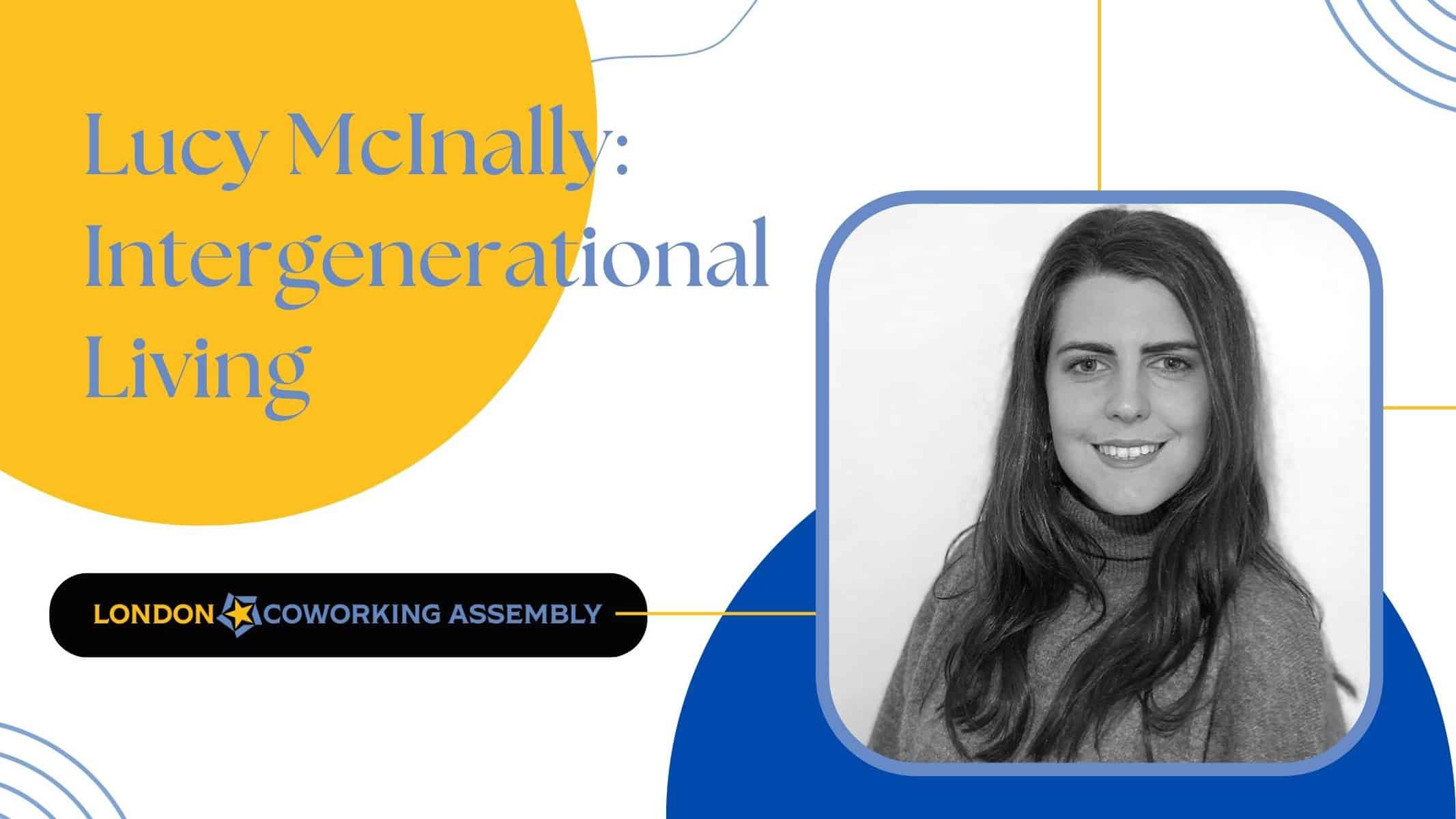Community is one of the most important aspects of coworking and one which many coworking spaces focus on, especially in regard to intergenerational living. But, communities ought to exist everywhere and everyone should be able to feel like they belong in the spaces that they use.
When it comes down to the way physical spaces have been designed and planned, in many cases, designers, developers and planners haven’t considered the needs of every single user. Many individuals are left out of the conversation, including those from varying economic backgrounds, genders, race, sexualities, ages, abilities and many more.
Lucy McInally is the founder of …And So Forth, and has a Masters Degree in Interior Design from the Glasgow School of Art, where she focused on the topic of intergenerational living, after she worked with the City Region Deal Stirling & Clackmannanshire to help deliver inclusive growth deal projects. Her passion lies in talking about inclusive and intergenerational spaces. Lucy now works with service providers in the coworking and coliving sectors.
To her, looking to the future is the most important. The London Coworking Assembly spoke to Lucy and this is what she had to say about inclusive and intergenerational planning.
Ageing population
The global population is living longer. It is important to ensure that all generations are comfortable in private and public spaces, and they can continue integrating in public life. Yet, this becomes challenging when the world around us isn’t necessarily designed for people who are getting older.
“Buildings and public spaces are designed to push people out of community life once they reach a certain age. Once an individual’s health diminishes, they may go to live in a care home, but these facilities are often situated outside of a town centre. With that,a sense of independence is lost, whereas having more independence would likely lead to a healthier, longer life,” explains Lucy.
Many residential houses are not suitable for people as they age. Older people might not be able to climb the stairs, and require the use of ramps to access their homes. There’s a lot of fixtures, fittings and design aspects of a typical home, which are not catered for someone who’s in a wheelchair, for example. Take for example the light switches on the wall, they are usually placed quite high and someone who makes use of a wheelchair might not necessarily be able to reach it. So someone who wants to continue living in their family home as they grow older might need to adjust their home to better suit their needs. There are many ways in which a building can be inclusive, like having easy access, or being close to transport facilities. Most people won’t be able to afford to make changes in their home, so it is important that developers build with the future in mind.
Lucy is determined to bring awareness to this. It is important for people to have the ability to choose how they live as they grow older. Coliving is a great option for people who’d like to transition from a single dwelling occupancy home to a community oriented neighbourhood, and one that can empower an individual’s sense of independence and freedom. Slowly, the conversation around senior living or coliving for the over 50s market is happening.
Intergenerational planning
Intergenerational refers to mixed generation or multi-generational spaces – spaces that are designed for older and young people to come together. For instance, a home for older people might also include spaces for a nursery for children, a gym for students or a cafe for everyone to use.
The University of Stirling, where Lucy worked at in 2019, is home to a worldclass Dementia Services Research Center, which employs a full time team of architects who research how to design spaces that are suitable for dementia patients to live and thrive in.
Lucy explains that “at the University of Stirling they were researching to develop an intergenerational village which was designed for the needs of older people with dementia, who can stay integrated in the community.”
Designing for the future
“I have met people who have started thinking about designing for their future,” says Lucy, including an architectural tutor from the University of Stirling who started redesigning her entire home to mitigate the risks associated with ageing, such as dementia.
The reason why her focus was so heavily on dementia, explains Lucy, is that studies have predicted that dementia cases will triple by 2050. With that in mind, the tutor created a space that has loads of textures to keep her and her husband’s mind stimulated, and also focused heavily on lighting. People diagnosed with dementia are sensitive to light, and need to navigate spaces with more natural light, so it was an important aspect to focus on.
Looking at how people interact with everyday spaces, buildings and interior design is an important discussion to be had. Lucy has dedicated many hours of her time studying and writing about ways to design more inclusive spaces.
One thing she found interesting was how important community is in the coworking and coliving sector. She explains that it plays an integral role in how coworkers react to a space, as well.
We have given Lucy a regular slot on our blog page. So look out for more conversations surrounding the planning of a space and ensuring that it is inclusive and accessible to all generations.

